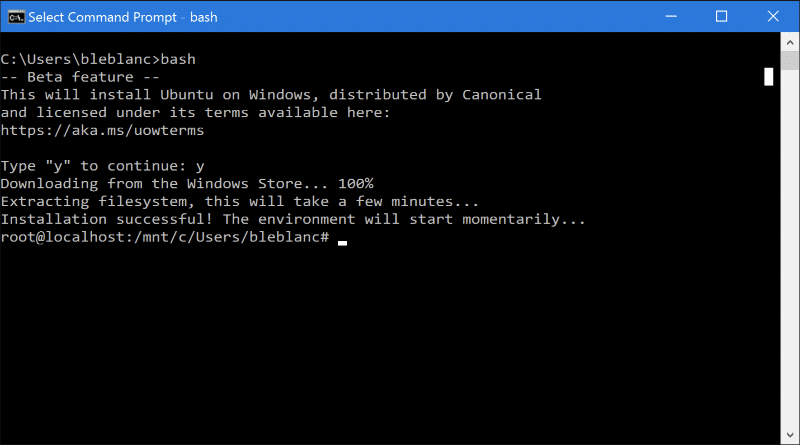Bash for Windows 10 Unfazed by Deadliest Linux Command
Alexander Neil / 9 years ago

Linux Bash shell came to Windows 10 recently as part of the latest Windows Insider preview build. Immediately, people began to experiment, some to see how well the shell was implemented, while others went straight for a command capable of wiping the entire system on a Linux operating system “rm -rf /”.
For those not familiar with Linux and the Bash shell, the reason this command is so deadly can be broken down into its three parts. “rm” is the command for removing or deleting files. “-rf” contains the additional commands for recursive and force. In combination, this causes all files, folders, and subfolders to be removed, without providing any prompt for the user, even those which are write protected. Finally, “/” represents the root location of the file system, where all files and folders are stored and where the command will look for files to delete. Often usage of this command is restricted or generates a warning on modern Linux systems as, should it be executed, everything will be deleted.
This danger made it an obvious choice to try out on Windows 10’s Bash shell though you would hope it was tried from the safety of a virtual machine or throwaway installation. Fortunately (or unfortunately), this command doesn’t cause anywhere near the damage it does to Linux, although the Bash terminal itself is not so lucky, being reduced to a useless black window when started up.
https://twitter.com/shanselman/status/717846035515584512
Windows isn’t fully safe from misuse of the Bash shell, as if you run the terminal as administrator and target the /mnt/c directory, the C drive can be deleted. Although, with the lengths you have to go to in order to wipe your operating system, if it happens then it’s likely your own fault, and really, it’s no more dangerous than the command line already in Windows.



















